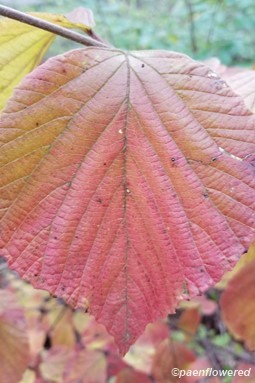Viburnum lantanoides
A native viburnum with edible fruits
Viburnum lantanoides hobblebush
Add to MyPlants View Locations
Called "hobblebush" because of the tendency of its drooping branches to touch the ground and grow roots of their own, thus presenting a tripping hazard for hikers, this native viburnum grows throughout the Eastern US as far south as Georgia and extends north into Canada.
The plant displays a serrate leaf that is cordate, or roughly heart-shaped. In early summer, usually around May or June, the plant will form large clusters of white or pink flowers, with two distinct sizes, a larger outer flower and a smaller inner flower. The larger flowers are sterile and mainly for show; the inner flowers contain reproductive parts.
Unlike many of the imported viburnum, the fruits of the hobblebush can be safely eaten or prepared as a jelly when fully ripened and black. The flowers provide a rich source of nectar for spring azure butterflies.
Habitat & Range
Occasional in cool, moist woods and ravines.
Found in northern and cetral parts of the state.
| EMP: | FACU |
|---|---|
| NCNE: | FACU |
Phenology
Flowers late April through May.
Fruits in August.
Plant Codes
S-rank: No Rank
G-rank: G5 (Secure)
Viburnum lantanoides hobblebush
Synonyms: Viburnum alnifoliumAdd to MyPlants View Locations
.jpg?v=638486808190000000)

















Comments
Have you spotted this plant in your area? We'd love to hear about your experience! Share your comments or questions about the plant below. Comments are moderated before posting.